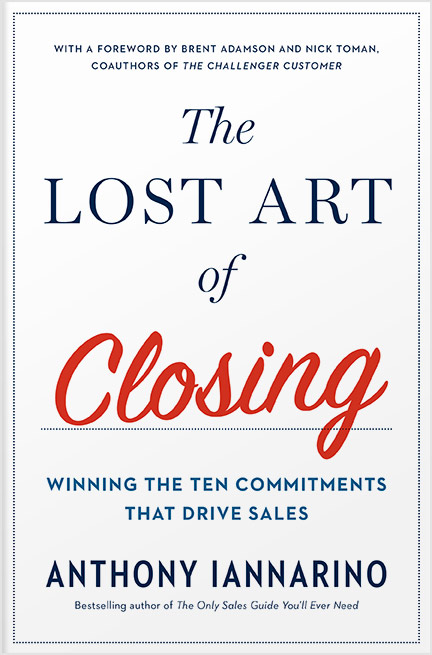It is rare that I disagree with Dave Brock, and perhaps more frequent that he disagrees with me. When we disagree, it is mostly by degrees, and this time maybe only a slight bit more.
Dave’s post is titled Stop Focusing on the Top of the Pipeline, and you should read it, but I will summarize it for you here: You should focus less on the top of the pipeline and more time worrying about effectively pursuing the opportunities you create. You should improve your win rates, deal size, and deal cycle time.
I struggle with ideas presented as mutually exclusive or that can be interpreted as such, and I worry about people believing that they need to trade ‘this” for “that,” when they would be infinitely better off with “this” and “that.” Is it possible that one might do better to focus on the top of the funnel and improve their effectiveness in pursuing deals? I hope Dave will forgive me, as I know he isn’t suggesting you quit prospecting altogether, but rather offering you another outcome on which to focus.
However, there are a host of additional motivations that might cause one to “never stop focusing on the top of the pipeline.”
Too Few Opportunities: It is possible that two people might be having two different experiences, which might lead one to believe something is more important than the other. What I see is too many salespeople and sales organizations with too few opportunities. If making your goal means winning 100% of your opportunities, including the massive deal that is an outlier, you need more opportunities.
No Accounting for Black Swans: Maybe you need 300% of your goal in the pipeline to make your goal, in which case, I would suggest you take Dave’s advice seriously. But if you don’t have enough coverage to account for the Black Swans, the events that are impossible to predict but can be rationalized through hindsight, you need to focus on the top of the pipeline. You are going to have deals push and fall out, often for causes outside of your control. You are also going to lose deals to competition and unforced errors.
Delusions and Non-Deals: I wrote about this in The Lost Art of Closing: Winning the 10 Commitments That Drive Sales. I sat in a meeting room with a sales leader as he reviewed his team’s pipeline. One large deal was 1,742 days old. The company’s deal cycle was 180 days. This deal should have been pushed out of the stage in which it was located in the CRM and pushed back to Target. Too many in sales and sales leadership delude themselves.
No more pushy sales tactics. The Lost Art of Closing shows you how to proactively lead your customer and close your sales.
Real Opportunity Creation Takes More Time: Of all the difficult outcomes to generate in sales, the first meeting with your dream client is right up there. This is especially true when you are calling on your dream clients, the companies presently being served by your competition. It takes time to nurture relationships and gain meetings that result in a competitive displacement. Without the investment in persistently, professionally, pursuing and prospecting, you won’t acquire these opportunities.
Buyers Struggle to Make Decisions, Including the Decision to Change: There is some finite population of prospects who are interested in changing what they are doing. There are some who are actively searching for a new solution and open to changing partners, in which case, you are already late to the party. Much more often, your prospects will have learned to live with many of their challenges, many struggling to decide to change even when it is clearly necessary. Add to that the number of stakeholders who are going to get to weigh in and you add the time required for consensus. Where this is true, deals can be pushed or drag on, and they often end in a no-decision.
Inconsistent Results: Have you ever had a killer first quarter, followed by a terrible second quarter, followed by an average third quarter? Have you ever experienced quarters that swing wildly from one quarter to the next? One of the reasons this is often true is because salespeople pursue a few large deals, successfully winning one that produces a killer quarter, followed by a couple of big losses that ruin the next two quarters. There are some salespeople (let us call them Mother Hens) who, having created a big opportunity, quit prospecting altogether. The long periods without prospecting culminates in an empty pipeline later, when there is no time to create enough opportunities to recover.
You don’t have to choose between prospecting and increasing your deal size, your win rate, or your sales cycle time (one metric I would be careful of trying to improve in scenarios in which speeding up causes your prospect to slow down).








.jpg?width=768&height=994&name=salescall-planner-ebook-v3-1-cover%20(1).jpg)


